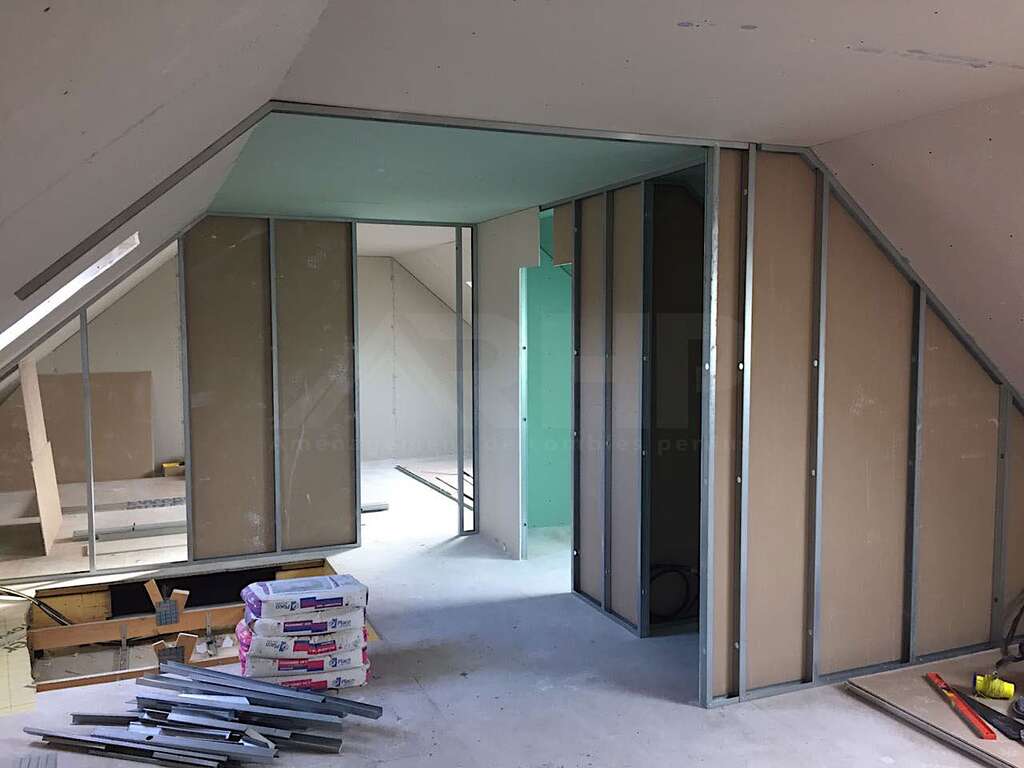Distribution partitions, or distributives, divide the living space. Alongside their layout function, they can meet a specific need forthermal insulation and/or phonics.
The distributive partitions therefore delimit the rooms and define the circulation axes of the dwelling. These walls, 5 to 10 cm thick on average, play no structural role, except when they coincide with a shear wall. They are then about fifteen centimeters thick. Their construction can be considered wet or dry.
The distribution partition in wet assembly
Wet assembly means a masonry elevation: plaster brick, glass brick, Aerated concrete or of plasterblock of cement… According to material implemented, the installation is carried out mortar traditional, plaster or “glue”. The elements are placed one by one and mounted with joints staggered row by row. The work is long and often messy. The thermal and/or acoustic treatment of the room requires a added insulation.
Before embarking on the construction of a masonry partition, one must ensure that the floor is able to support the load. © Placo
Drywall made easy
Easier and quicker to make, drywall consists of mechanically assembled elements. The assembly of plasterboard on metal frame makes it possible to integrate insulation without creating extra thickness. The uprights also include perforations for the passage of electrical conduits. If you opt for a framework wood, the cleats must be pre-drilled to the desired diameter. The distribution drywall can also be made of hollow brick stapled (clipped) on a frame or, even, in alveolar panels covered on each side of chipboard melamineMDF, plasterboard, etc.
The drywall on a steel frame makes it possible to arrange the volume of the attic without overloading the floor too much. © RHP Combles
You may also be interested
Interested in what you just read?

